How to Take Better Photos with Your Phone’s Camera
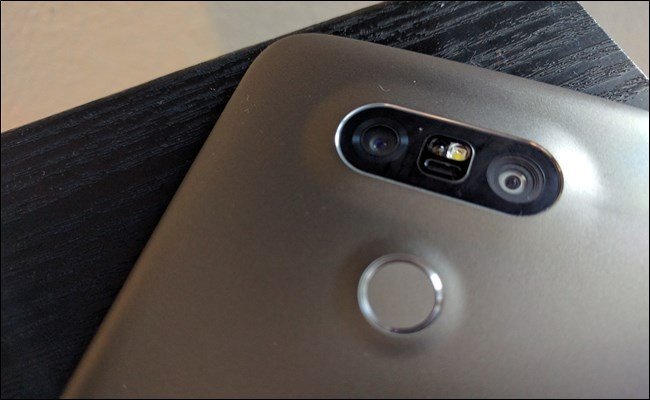
They say that the best camera is the one you have with you, and most smartphone cameras can now easily replace a point-and-shoot. For users who have experience taking pictures, the passage of a “real” camera in a smartphone can be easy, but for users with no photography experience, it can be a challenge to get a shot at decent search from your phone. Fortunately, smartphone cameras are often more intuitive than many traditional cameras, and landing the best picture just take some considerations.
I will be using a variety of Android phones for this tutorial, but you should easily be able to apply the methods used here all pay attention to the basic smartphone at stake here, not necessarily the interface used.
Make sure the lens is clean
This should really go without saying, but you’d be surprised how many people forget to check the lens for stains before they try to take a picture. It is still the phones, after all, they are subject to adequate quantities of fingerprints and dirt to be thrown into the pockets and other kinds of abuse, while the cameras are generally not. So yes, make sure the lens is clean and spotless before whipping the phone and start taking pictures.

Now you’re ready to channel your inner photographer, let’s talk about actually using this camera.
Lighting Is Everything
Lighting is absolutely critical in obtaining a good image and doubling on smartphones, which often do not do as well in low light that autonomous cameras. Bad lighting on a normal camera will produce a picture as normal, but poor lighting on a smartphone camera can produce absolute rubbish.
Let’s talk basics. You saw shoots professional photo where they have an absolutely ridiculous amount of lights behind the photographer, right? There is a good reason for this: the lighting is everything when it comes to details. Proper lighting can do everything, put the focus exactly where you want to make a baby skin smooth.
So where should you go? Where should the subject be? Think of a photo studio: the lights are on the back, shining on the subject, and the photographer is somewhere in the middle. The same idea applies to take simple smartphone photos: avoid putting the light source to the back of subject movement around until the light source is behind you, emphasizing the subject. Here is a good example of poor lighting compared to optimal lighting:
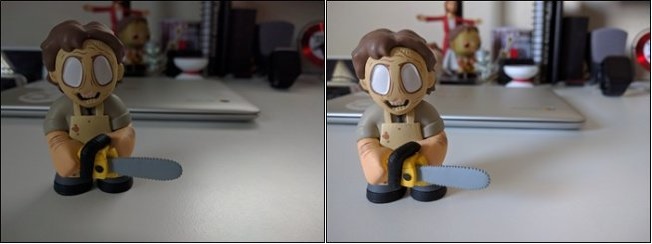
Here are some tips to keep in mind when shooting with your smartphone:
Avoid direct sunlight:
This wash the entire image. Cloudy days are great for taking pictures, but if it is sunny, trying to find some shade. This should provide the perfect lighting situation.
Once inside, shoot near a window. Remember, do not turn your back on your subject at the window, but they have them rather / her face to the window. Be aware of where the sun is, as the building interior lighting will change throughout the day.
Avoid flash in a dark room:
If you can, try not to use the flash to take close-ups (or macro) shots. This can wash their subjects while black background. The flash can be great for a quick, wide shooting in a dark environment, but for any sort of “portrait” of photography, it is a no-go. See below for an example of how hard the flash can be in a dark room.
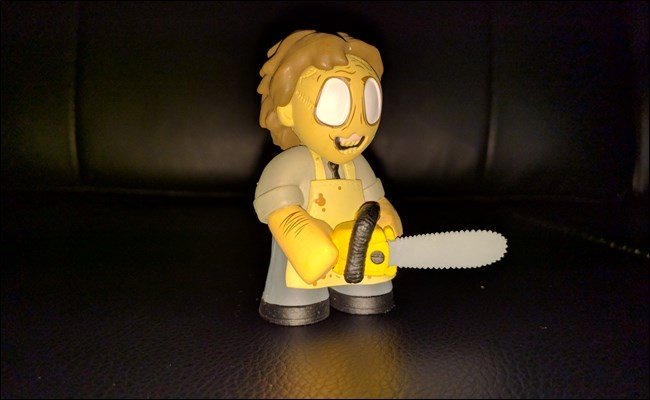
Again, move! Play with. The more different photos you take, the better chance you have of a decent search. It may take a bit to understand this whole “light” thing, but once you do it will start coming more naturally. There is, however, another piece of the puzzle that goes hand in hand with the lighting.
Always check the exposure and focus
Oh, SNAP-we just use a word of photography. Exposure? What is it?! To put it in the simplest terms, exposure is the amount of light reaching the camera’s sensor. To make this easier to understand, take your phone and open the camera. Now find a scene with both light and dark objects. Press the black see how the entire frame on? Now press the object-light everything should become darker. This is basically your phone to automatically adjust the exposure. Cool, right? modern phone cameras make the exhibition so simple, especially compared to other advanced cameras that do not have touch screens. Here is a look at the difference of exposure can do:

But it’s the other half of good lighting. Sometimes, the phone automatically selects a kind of “central” point of exposure after seeing the entire frame (you can usually watch this happens, you move the phone, the lighting will change on the screen) but if you want more control over lighting, simply touch a little bit to get the perfect exposure. You generally do not want to use the extreme here, to avoid typing on super-dark objects or super lightweight. Like everything else, play with it and see what is best.
Along those same lines, you can change the focus of the photograph by pressing it. A “depth of field” -a shallow level where part of the image is in perfect focus and the rest is blurred is often sought, but then it is not something that is very important to most smartphones, it is still important. See images below-the left one shows the background in focus, while the right shows our subject in focus.
The main thing to consider when setting the focal point is that it also adjusts the exposure, so you might have to play with just a bit to get the exposure and depth of field correctly adjusted.
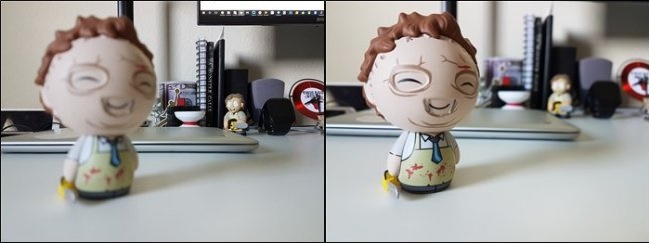
Given the limited adjustments that can be made to most smartphones, keep in a small depth of field mind is difficult, if not impossible, to get on more important things, like people. If you photograph objects smaller and shallow depth of field is a little easier to achieve. Just be aware of the physical limitations that you have to overcome it is a smartphone after all, not a DSLR.
When to use HDR
HDR, or “High Dynamic Range” is a great way to get better sharper images in difficult situations. Essentially, this method takes three photos with different exposures, and then combines them into one image which is why it takes a little longer to get a HDR shot on your phone. This provides a better overall balance by improving the operation of the light to the darkness of the scene.
Sounds good, right? It is! But there are times when it’s a good idea to use HDR, and there are times when it is better to leave it off. Here’s a quick and dirty list to make it a little easier.
It is good to use when shooting HDR:
- Landscape: HDR can make the most of a landscape scene. It will help the picture looks more like what your eyes see from what the camera sees.
Portraits in bright light: We have already established that the images sunlight are bad, but if you can not avoid it, HDR can help balance out and remove some of the hardness.
When the backlight is inevitable: If you absolutely can not help but have your subjects return to the light source, HDR can help balance the contrast in other words, the subjects will not be as dark.
It is generally bad to use when shooting HDR:
- Action scenes: Since HDR requires three shots in a row, the movement is a no-no. Your subjects will be very blurred.
high contrast situations: Sometimes you want a high contrast for dramatic effect. HDR will remove it. - Bright colors: This is one that many people abuse-HDR did a good job to make many more moves high heat, but use the already sharp blows can wash, removing the desired effect.
Many phones have an Auto HDR is correct to when activate itself, but the automatic mode can not do it every time, so keep these bullet points in mind as you shoot, and you can HDR activate or deactivate when you know it is appropriate.
Do not Zoom, Ever
DSLRs have what is called “optical zoom”, which means the lens actually moves forward to enlarge. On smartphones, this is not possible, so they use “digital zoom,” which essentially means zooms software and crop the shot.
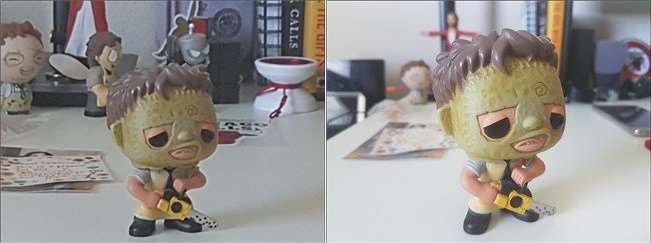
Therefore, greatly affects the quality of the image. Digital images often become enlarged pixelated, and the more you zoom in, the worse it becomes. To put this in perspective, one thing about taking a picture you have already saved on your computer and then resize it to enlarge. This is essentially what makes digital zoom. In some cases, the software will attempt to dispel any artifacting what happens, but it will always exist.
The solution? Get closer. I realize that this may not be ideal, but it will always be the best answer. Remember, the digital zoom essentially crops your photos-which, if you need to, you can always do it later with the editing tools to your phone. He still will not look good, but at least you have a choice, if you shoot with digital zoom, you can not get that extra resolution back.
Take a look at the images above for reference: the left is enlarged, the second is just a closer shot. Huge difference, right?
Don’t Forget About More Advanced Features
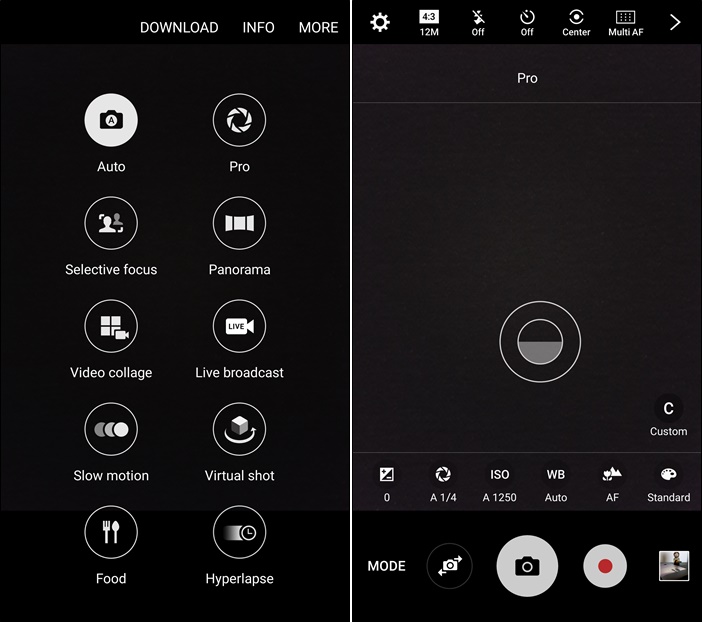
Many smartphone camera applications also offer access to advanced features such as aperture, ISO, white balance, and more. It is not something that most people want or even need to access, but it is useful to keep in mind they are there. Of course, this depends on the phone, application, and then delve into the settings and see what you can find. These can be a little hard to take at first, so further research may be needed to fully understand what they all do. For most users, however, this section can be left alone.
A few other things to keep in mind
And, of course, none of this is intended to exclude the basics of good photography, including:
Environment:
Always be aware of your surroundings. This can quickly ruin another great shooter.
Background: This goes hand-in-hand with the last point. Try to keep the background in contrast to the foreground-a child dressed in a green shirt on a background of bushes or trees did not make much sense, for example.
Framing:
This is crucial! You do not have to center the image, but make sure to frame it as best as possible, properly set the picture will pop object, which is exactly what you are going for.
The rules for smartphones are not so different than the rules for the cameras-there are a few rules that become more important. Pamper your photos and you can get some great shots in search of a phone.
Unhappy with your camera? Try another App!
It’s really the beauty of shooting with your smartphone if you do not like the interface of your manufacturer gives you, you can simply install something else and give it a shot. A quick search of your favorite app store will likely show dozens of options for photo-some simple devices, some very comprehensive. Some are based on the effects, while others offer integrated editors. To get you started, you could check for Camera+ for iOS or Camera FV-5 for Android.
Personally, I find that most manufacturers are doing a very good job to provide the best camera software for their phones but there is always room for exploration.
See also:
- 25 Tips To Shoot Perfect Videos From Your Smartphone
- Highlight, Edit and Copy Text from any Online Image
- Google Photos Tips and Tricks with More Efficiently
Take good pictures with a smartphone takes practice, but it is certainly not out of the question to be able to take high quality shots with your handset. With a little patience and practice, you will be typing those shots once in a lifetime with your phone like a pro. Oh, and just for reference, each image in this post was taken with a smartphone. Boom.